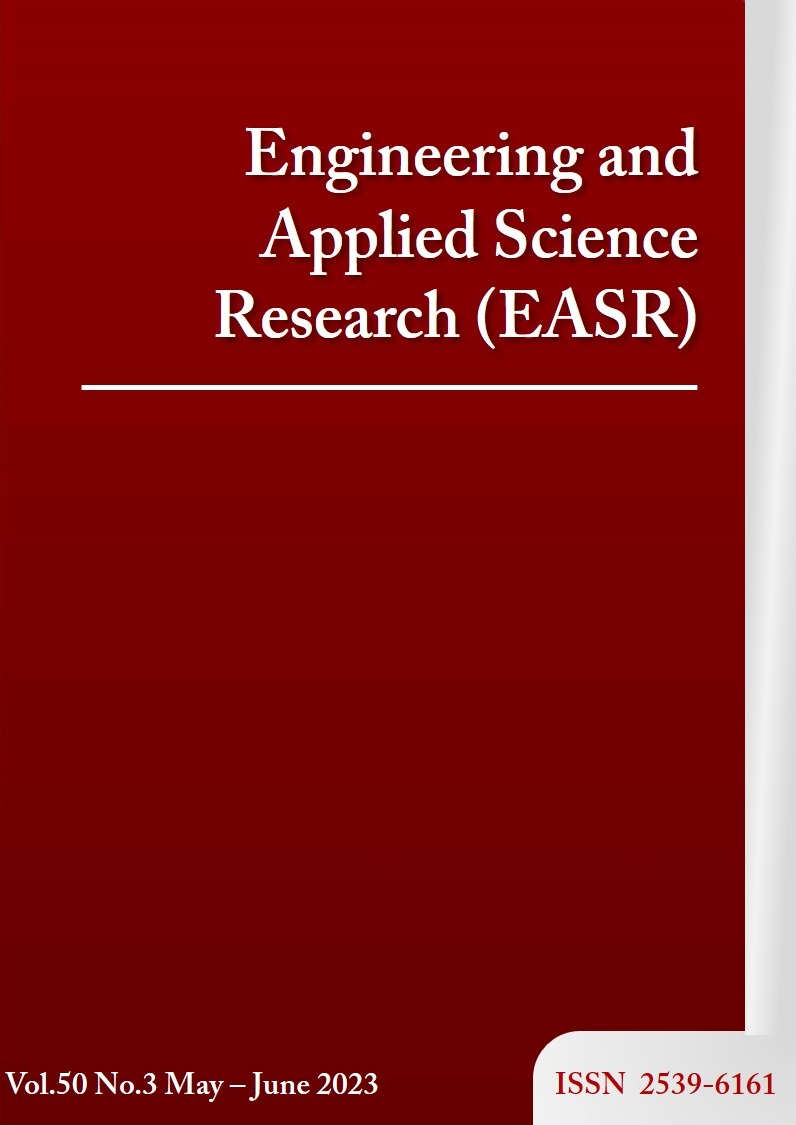Optimization for flood evacuation shelter location-allocation problems with different priority level constraints
Main Article Content
Abstract
A natural disaster is a major adverse event. Flooding is a common natural disaster that damages the environment and causes economic losses, deaths, and homelessness. In recent years, floods have significantly impacted people in Asia. Although disasters cannot be avoided, we can develop plans to address their associated problems. However, resources for preparation, capital, time, and employees are limited. This paper aims to address the location-allocation problem in humanitarian aid during catastrophes by planning and managing evacuation of victims from flooded areas to safe locations. A mixed-integer programming model is used to determine the number of shelters needed and to assign the victims to appropriate shelters using a facility location and allocation model. The model considers the total population in each affected area, the travel distance, victim's priority score, shelter's priority score, shelter's capacity, fixed cost for transportation, cost for opening the shelter, and staff wages. To approach the real-world issues, we expand some constraints in the mathematical model concerning the priority level of victims and the capacity limit of facilities. An experiment comparing various scenarios at different problem scales was done to gauge the validity of the proposed approach. The outcomes demonstrated the applicability of the suggested strategy.
Article Details

This work is licensed under a Creative Commons Attribution-NonCommercial-NoDerivatives 4.0 International License.
This work is licensed under a Creative Commons Attribution-NonCommercial-NoDerivatives 4.0 International License.
References
Centre for Research on the Epidemiology of Disasters (CRED). 2021 Disasters in numbers extreme event defining our lives. Brussels: Centre for Research on the Epidemiology of Disasters (CRED), Institute Health and Society – UCLouvain; 2021.
Nkeki FN, Bello EI, Agbaje IG. Flood risk mapping and urban infrastructural susceptibility assessment using a GIS and analytic hierarchical raster fusion approach in the Ona River Basin, Nigeria. Int J Disaster Risk Reduct. 2022;77:103097.
Alborzi A, Zhao Y, Nazemi A, Mirchi A, Mallakpour I, Moftakhari H, et al. The tale of three floods: From extreme events and cascades of highs to anthropogenic floods. Weather Clima Extremes. 2022;38:100495.
Muagthong S, Sriboonlue V. Flood zoning in Songkram Basin. KKU Eng J. 2000;27(3):31-46.
He J, Feng C, Hu D, Liang L. A Decision model for emergency warehouse location based on a novel stochastic MCDA method: evidence from China. Math Probl Eng. 2017;2017:7804781.
Gulzari A, Tarakci H. A healthcare location-allocation model with an application of telemedicine for an earthquake response phase. Int J Disaster Risk Reduct. 2021;55:102100.
Jahedul Alam MD, Habib MA, Pothier E. Shelter locations in evacuation: a multiple criteria evaluation combined with flood risk and traffic microsimulation modeling. Int J Disaster Risk Reduct. 2021;53:102016.
Hallak J, Koyuncu M, Miç P. Determining shelter location in conflict areas by multi-objevtive modeling: a case study in northern Syria. Int J Disaster Risk Reuct. 2019;38:101202.
Luo L, Wan x, Wang Q. A multi-period location–allocation model for integrated management of emergency medical supplies and infected patients during epidemics. Comput Ind Eng. 2022;173:108640.
Boonmee C, Ikutomi N, Asada T, Arimura M. An integrated multi-model optimization and fuzzy AHP for shelter site selection and evacuation planning. J Jpn Soc Civ Eng. 2017;73(5):225-40.
Praneetpholkrang P, Huynh VN, Shelter site selection and allocation model for efficient response to humanitarian relief logistics. In: Freitag M, Haasis HD, Kotzab H, Pannek J, editors. Dynamics in logistics. Cham: Springer; 2020. p. 309-18.
Ozbay E, Çavuş Ö, Kara BY. Shelter site location under multi-hazard scenarios. Comput Oper Res. 2018;106:102-18.
Khumhan T, Sindhuchaod S. Location selection and vehicle routing for topioca strach production indrusties in north-eastern of Thailand by using ant colony optimization. KKU Eng J. 2013;40(3):341-54.
Wongloucha K, Jamrus T, Kusoncum C, Pattanapairoj S. A mathematical model for flood victims evacuation planning: a case study of flooded areas in Roi Et province from Typhoon Podul and Kajiki in 2019. KKU Res J (Graduate Studies). 2022;22(3):110-26.
Gao X, Zhou Y, Amir MIH, Rosyidah FA, Lee GM. A hybrid genetic algorithm for multi-emergency medical service center location-allocation problem in disaster response. Int J Ind Eng. 2017;24(6):663-79.
Mollah AK, Sadhukhan S, Das P, Anis Z. A cost optimization model and solutions for shelter allocation and relief distribution in flood scenario. Int J Disaster Risk Reduct. 2018;31:1187-98.
Mohamadi A, Yaghoubi S. A bi-objective stochastic model for emergency medical services network design with backup services for disasters under disruptions: an earthquake case study. Int J Disaster Risk Reduct. 2017;23:204-17.
Duhamel C, Santos AC, Brasil D, Châtelet E, Birregah B. Connecting a population dynamic model with a multi-period location-allocation problem for post-disaster relief operations. Ann Oper Res. 2016;247:693-713.
Shavarani SM. Multi-level facility location-allocation problem for post-disaster humanitarian relief distribution: a case study. J Humanit Logist Supply Chain Manag. 2019;9(1):70-81.
Kilci F, Kara BY, Bozkaya B. Location temporary shelter area after an earthquake: a case for Turkey. Eur J Oper Res. 2015;243(1):323-32.



